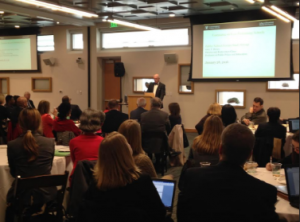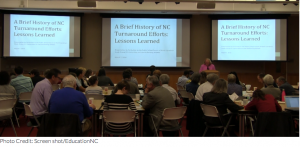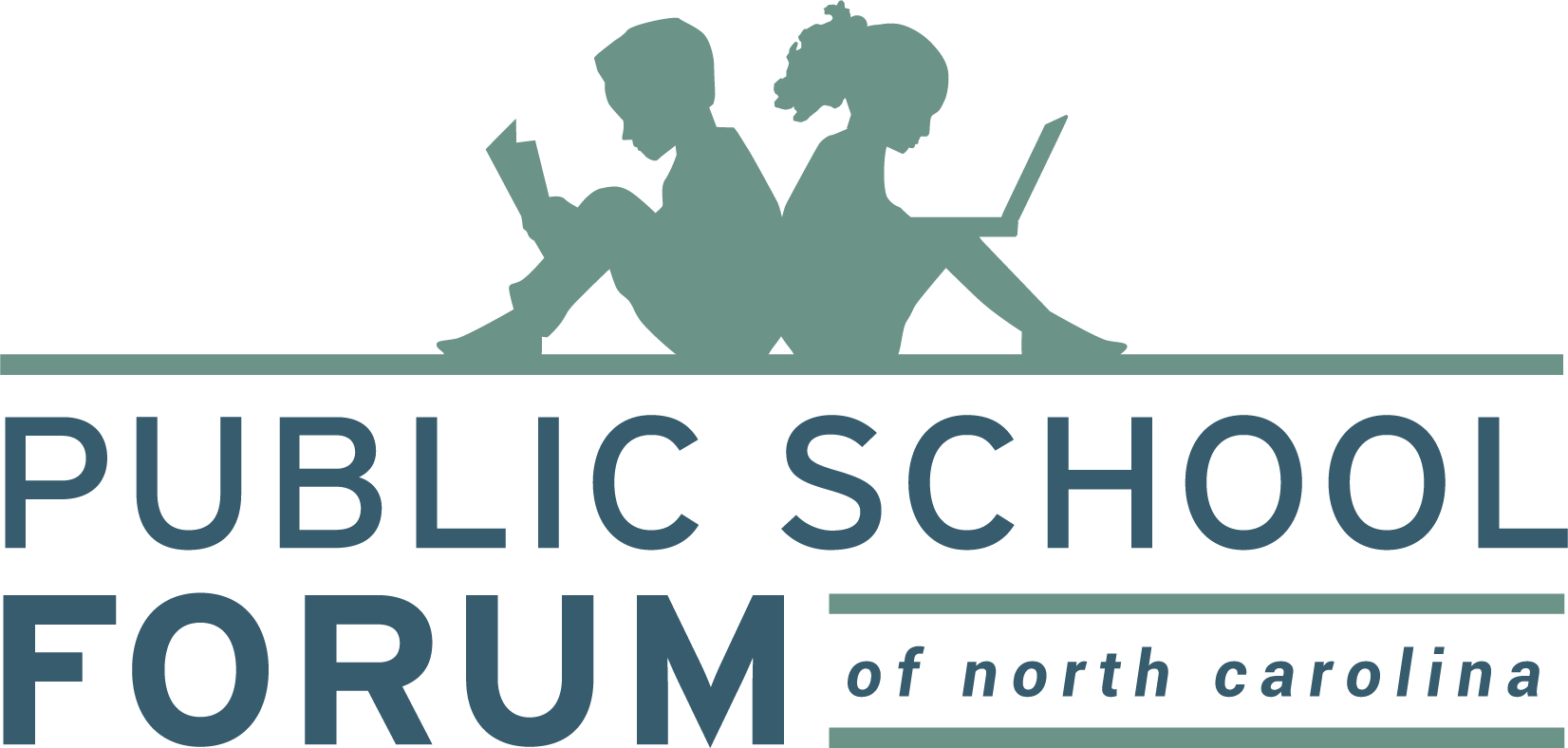Our third committee focused on the challenges of turning around the state’s lowest-performing schools. Its work complements the efforts of the other two committees; together, they offer a suite of interventions that address key factors impacting student learning at multiple levels and addressing the inequality issue. The Committee on Trauma & Learning grappled with highly individualized elements of students’ experiences. The Committee on Racial Equity looked at cultural and environmental factors affecting relationships among groups of students. By comparison, the work of the Committee on Low-Performing Schools was structural, examining variables that affect all students, families, and educators in a given school community.
Currently, the state classifies as “low-performing schools” those that receive a School Performance Grade of D or F and do not “exceed expected growth.” The letter grade is based 80 percent on the school’s achievement score (which uses various data including student performance on end-of-grade and end-of-course standardized test scores) and 20 percent on students’ academic growth (a measure of students’ performance in relation to their expected performance based on the prior year’s test results), resulting in a grade of A, B, C, D, or F. “Low-performing districts” are those with over 50 percent of their schools identified as low-performing. Based on 2015-16 data, there are 489 low-performing schools (20% of all schools in the state), and 10 low-performing districts out of 115. Last year, there were 581 low-performing schools (24.6%) and 16 low-performing districts.
The state’s current work to support low-performing schools is run through the Department of Public Instruction’s Division of District and School Transformation. This Division provides services and support to build the capacity of staff serving in low-performing schools and districts, and to “develop or improve systems and processes that will sustain a continuous improvement culture.”((N.C. Department of Public Instruction, Division of District and School Transformation. https://www.dpi.state.nc.us/schooltransformation/)) The Division’s coaches work with school-based professionals and district officials to support planning and implementation of their improvement plans, informed and customized based on a Comprehensive Needs Assessment provided by the Division.
North Carolina has a long history of supporting its struggling schools. In 1999, the state’s efforts earned the praise of President Clinton in his State of the Union address. In 2005, the state implemented the NC High School Turnaround Initiative, which was subsequently expanded to serve middle schools, before redesigning a new state assistance model for low-performing schools that it began implementing in 2007-08. More recently, under the state’s Race to the Top grant, the state implemented an extensive effort, called Turning Around the Lowest-Achieving Schools (TALAS).
History of Turnaround Efforts in NC, 1996-2016((Based on Ashley, P. (2016). A Brief (and Probably Imperfect) 20-year History of Turnaround Efforts in NC (1996-2016). Prepared for the Public School Forum of North Carolina’s Study Group XVI.))
| 1995 | Era of Assessment and Accountability begins after General Assembly directs the State Board of Education (SBOE) to develop a restructuring plan |
| 1995-96 | 108 schools in 10 districts given pilot assessments for development of new model |
| 1996 | General Assembly approves SBOE plan and enacts as law School Based Management and Accountability Program (ABCs) |
| 1996-97 | Schools administer assessments in grades K-8; Assistance teams assist low-performing schools (deployed on request) |
| 1997-98 | SBOE officially designates low-performing schools. Statutory definition of “low-performing school” is below 50% proficient and not making expected growth. A low-performing district is a district with over 50% of its schools low-performing. Assistance teams deployed to intervene in low-performing schools. |
| 1998-2005 | SBOE continues to identify low-performing schools and deploy assistance teams. Typically 4-5 person teams spend a year in a school. Not all “low-performing schools” receive an assistance team. Districts with low-performing schools must submit plans to the state for school improvement. In 2001-03, the state began collecting data to report Adequate Yearly Progress (AYP) under No Child Left Behind, with a goal of 100% proficiency by 2013-2014. |
| 2005-06 | Under state definition 51 schools are designated as low performing (2.2% of schools in NC). There are 52 full-time staff deployed as assistance team members. Under the direction of the governor’s office and the court, high schools with performance composites under 60% proficient for 2 consecutive years became part of the NC High School Turnaround Initiative. AYP for state showed 1,044 schools (45.2%) met goals and 1,268 (54.8%) did not. |
| 2006-07 | Under state law, 45 schools (1.9%) are identified as low performing. SBOE deploys assistance teams for final year. The court and executive branch direct SBOE/NCDPI to expand NC Turnaround Initiative to include underperforming middle schools (37) that feed the identified high schools. A second cohort of high schools joins the NC High School Turnaround Initiative. DPI engages in redesign of state assistance model. |
| 2007-10 | The new model for state assistance is implemented in Columbus and Lexington City (starting in 2006-07), and in Richmond, Bertie, Hertford and Halifax (beginning in 2007-08). The NC High School and Middle School Turnaround Initiatives continue with the original cohorts. Low performing elementary schools become a 4th cohort under the Initiative. The Halifax County Schools enters into a consent agreement with the State Board of Education (SBOE). |
| 2010-11 | NC receives Race to the Top (RTTT) grant. Goals of the grant related to the state’s new effort, Turning Around Lowest Achieving Schools (TALAS), are: (1) Improve student achievement in the bottom 5% of NC schools (118 schools), (2) Increase graduation rates of all high schools in NC to above 60%, and (3) Improve achievement in lowest 10% of NC schools districts (12 districts). NC Turnaround Initiative is phased out and replaced by Race to the Top, under which District and School Transformation Division blends federal and state resources to serve many more schools and districts. |
| 2011-12 | Year Two of TALAS. In May of 2012 USED approves NC’s request for flexibility under NCLB and NC no longer designates AYP. Instead NC reports Annual Measurable Objectives (number of targets met and % of targets met). State serves one hundred and eighteen individual schools (bottom 5%) and 12 districts (bottom 10%). |
| 2012-15 | Years 3-5 of TALAS. NC begins new accountability system (READY), replacing ABCs. Using all EOG and EOC, school growth is calculated using EVAAS with 3 designations: exceeded growth, met growth and did not meet growth. High schools report multiple factors. No designation of “low-performing schools.” State serves bottom 5% of schools and bottom 10% of districts. In Year 5 (extension of TALAS), A-F school grades are added to accountability model. |
| 2015-16 | Revisions made to NC law regarding low-performing schools and districts. Definition now based on A-F letter grades. Low-performing school redefined as a D or F school not exceeding growth. Low performing district defined as a district with over 50% of its schools identified as low performing. 581 schools and 16 districts are identified as low-performing. New model for support is developed: North Carolina Transformation. This model will support NC schools through four Service Support Teams; 75 of 581 eligible schools will receive in-school support. |
In the past several years, the state’s approach to low-performing schools has shifted. Today, state policy is characterized by the new A-F school performance grades, which are now linked to the “low-performing schools” label as well as various interventions, including potential inclusion of the school in the new Achievement School District (discussed below), and enrollment criteria for new University of North Carolina “lab schools.”((“Low-performing schools are those that receive a school performance grade of D or F and a school growth score of ‘met expected growth’ or ‘not met expected growth.’” N.C. Gen. Stat. § 115C-105.37(a).))
Most of North Carolina’s “low-performing schools” serve high concentrations of students living in poverty. This link between poverty and school performance spotlights the intense needs these schools face and provides a strong rationale for giving them significant support. Unfortunately, decreased funding and the end of Race to the Top funding mean that last year the state was able to provide support to only 75 of 581 eligible schools.
Options created by the General Assembly that enable students to leave the low-performing schools to which they have been assigned create choices for students but do not provide the funding public schools need to serve these students well. Recent policy interventions have tended to focus on enabling students to select alternatives to their assigned schools, most prominently private schools (through vouchers) and charter schools. In 2016, the General Assembly also enacted legislation to create an Achievement School District (ASD), through which low-performing schools can be removed from their districts and turned over to private nonprofit or for-profit operators to run as charter schools. The same legislation permits each district with a school pulled into the ASD to run a small group of schools with charter-like flexibility in an “Innovation Zone.”
Some Committee Members favor doing away with A-F grades entirely. Others propose increasing the weight placed on students’ academic growth or moving to a growth-to-proficiency model or one that includes multiple additional factors in the grade calculation (e.g., growth among a school’s lowest-achieving students). Others are more circumspect about eliminating or altering the formula. Many hold out hope that the system can be helpful if it results in a call to action, to target supports to schools most in need (i.e., the highest-poverty schools, which tend to receive lower grades).
The Committee learned a great deal about alternatives for supporting low-performing schools as well as the successes and struggles of strategies that have previously been implemented in North Carolina and in other states.
- North Carolina’s History of School Turnaround with J.B. Buxton, former Deputy State Superintendent of the North Carolina Department of Public Instruction. Mr. Buxton discussed his time at the department, during which the state intervened in 135 low-performing schools and six low-performing districts. He also reviewed the arc and evolution of the state’s approach to turnaround from 1996-2010, major events and shifts in the state’s theory of change during that time period, and lessons learned and related recommendations.
- The Current Status of North Carolina’s Turnaround Strategy with Dr. Nancy Barbour, Director, District and School Transformation, North Carolina Department of Public Instruction. Dr. Barbour discussed the Division’s current approach to district and school transformation; the main actions the Division is taking and expects to take in the future to turn around the lowest-achieving schools; and the state’s TALAS initiative under Race to the Top and how it has informed the Division’s work moving forward.
- What’s Happening Around the Country? A National Perspective on Turnarounds. Committee members reviewed a 2015 primer from the Education Commission on the States, Emerging State Turnaround Strategies. They then had an opportunity to discuss strengths and weaknesses of the approaches covered in the document: 1) Innovation zones, 2) Recovery districts (like
 the Achievement School District), and 3) Receiverships.
the Achievement School District), and 3) Receiverships. - Nashville’s Innovation Zone (I-Zone) with Dr. Alan Coverstone, creator of Nashville’s I-Zone. In his work with the I-Zone, Dr. Coverstone developed a corps of turnaround leaders and led the expansion of autonomy and accountability for a growing number of schools and school leaders.
- School Turnaround and the “London Effect” with Drs. Helen “Sunny” Ladd and Ted Fiske. Over the past 15 years, schools in several boroughs in Inner London,
 which serve high proportions of disadvantaged pupils, have achieved remarkable improvement to the point where these students are now performing above national averages. Drs. Ladd and Fiske shared key findings from their research on primary schools in two boroughs, Hackney and Tower Hamlets, and lessons for those seeking to improve the performance of low-performing schools in the United States.
which serve high proportions of disadvantaged pupils, have achieved remarkable improvement to the point where these students are now performing above national averages. Drs. Ladd and Fiske shared key findings from their research on primary schools in two boroughs, Hackney and Tower Hamlets, and lessons for those seeking to improve the performance of low-performing schools in the United States. - School Turnaround in Tennessee and North Carolina with Dr. Gary Henry. Dr. Henry discussed his recent report, “Evaluation of the Effect of Tennessee’s Achievement School
 District on Student Test Scores,” as well as his evaluation of North Carolina’s TALAS initiative. Within his discussion of Tennessee’s turnaround efforts, Dr. Henry presented data on schools run by the state’s Achievement School District (ASD), differentiating between ASD-run schools and those run by charter operators, as well as schools in several local Innovation Zones.((Videos of Dr. Henry’s presentation are embedded in the article hyperlinked to the photo.))
District on Student Test Scores,” as well as his evaluation of North Carolina’s TALAS initiative. Within his discussion of Tennessee’s turnaround efforts, Dr. Henry presented data on schools run by the state’s Achievement School District (ASD), differentiating between ASD-run schools and those run by charter operators, as well as schools in several local Innovation Zones.((Videos of Dr. Henry’s presentation are embedded in the article hyperlinked to the photo.)) - Site Visits to Schools Categorized as “Low-Performing.” Committee members visited two schools, Maureen Joy Charter School and Y.E. Smith Elementary School, and had an opportunity to visit classrooms and talk with teachers and school leaders about school performance and their specific efforts to turnaround their schools, both of which were categorized as “low-performing.”

- North Carolina’s efforts to turn around low-performing schools before 2011 and under Race to the Top with Pat Ashley, Former Director, District and School Transformation Division, NC DPI. Dr. Ashley shared her experiences leading the state’s efforts to turn around low-performing schools. She focused on the state’s interventions in schools and districts under Race to the Top as well as the department’s prior efforts.
- School and District Turnaround Leader Panel. The Committee met with a group of
 distinguished leaders to discuss their experiences with low-performing schools. The panel consisted of: Erin Swanson, Principal, Martin Millenium Academy; John Farrelly, Superintendent, Edgecombe County Schools; Catherine Edmonds, Director and Executive Coach, Northeast Leadership Academy District and School Transformation; and Pascal Mubenga, Superintendent, Franklin County Schools.
distinguished leaders to discuss their experiences with low-performing schools. The panel consisted of: Erin Swanson, Principal, Martin Millenium Academy; John Farrelly, Superintendent, Edgecombe County Schools; Catherine Edmonds, Director and Executive Coach, Northeast Leadership Academy District and School Transformation; and Pascal Mubenga, Superintendent, Franklin County Schools. - A Conversation with Leaders of Schools Designated “Low-Performing.”
 A second panel of distinguished school leaders presented to the Committee about their experiences. All panelists’ schools are either now or were previously designated as low-performing. The panel consisted of: Carrie Tulbert, Principal, Concord Middle School, and 2014 NC Wells Fargo Principal of the Year; Rusty Hall, Principal, Old Town Elementary School, and 2015-16 Winston-Salem/Forsyth Principal of the Year; Kristy Thomas, Principal, Rock Rest Elementary School; and Jacqueline Williams, Principal, Pittman Elementary School, and 2015-16 Halifax Principal of the Year.
A second panel of distinguished school leaders presented to the Committee about their experiences. All panelists’ schools are either now or were previously designated as low-performing. The panel consisted of: Carrie Tulbert, Principal, Concord Middle School, and 2014 NC Wells Fargo Principal of the Year; Rusty Hall, Principal, Old Town Elementary School, and 2015-16 Winston-Salem/Forsyth Principal of the Year; Kristy Thomas, Principal, Rock Rest Elementary School; and Jacqueline Williams, Principal, Pittman Elementary School, and 2015-16 Halifax Principal of the Year. - District-led Turnaround in North Carolina – Knightdale High School of Collaborative
 Design. The Committee learned about the innovative district and school-led turnaround effort in Knightdale from Principal Jim Argent, Area Superintendent Dr. Edward McFarland, and Eric Grebing from NC New Schools | Breakthrough Learning. After their presentations, the Committee discussed the initiative with a panel including a parent, a teacher, and a student from Knightdale, along with Dr. Argent, Dr. McFarland, and De McKenzie from NC New Schools | Breakthrough Learning.
Design. The Committee learned about the innovative district and school-led turnaround effort in Knightdale from Principal Jim Argent, Area Superintendent Dr. Edward McFarland, and Eric Grebing from NC New Schools | Breakthrough Learning. After their presentations, the Committee discussed the initiative with a panel including a parent, a teacher, and a student from Knightdale, along with Dr. Argent, Dr. McFarland, and De McKenzie from NC New Schools | Breakthrough Learning. - Discussion of “School Turnaround in North Carolina: A Regression Discontinuity Analysis,” with Dr. Helen “Sunny” Ladd. This report, authored by Dr. Ladd and Jennifer A. Heissel, examined results of the North Carolina TALAS initiative for elementary and middle schools. Unlike Dr. Henry’s evaluations of TALAS, which focused on high schools and found generally positive results, the report by Ladd and Heissel found that “turnaround led to a drop in average school-level math and reading passing rates and an increased concentration of low-income students in treated schools.”((Heissel, J. A., & Ladd, H. F. (2016). School Turnaround in North Carolina: A Regression Discontinuity Analysis. Washington, DC: National Center for the Analysis of Longitudinal Data in Education Research (CALDER) (Working Paper).))
All children deserve great schools. Unfortunately, North Carolina has too many students attending schools that miss the mark. Turning around these schools would not fully address the constitution’s educational opportunity mandate (some students in higher-performing schools are also not being provided the opportunity to receive a sound basic education), but it would be a great start. The recommendations in this section pertain specifically to low-performing schools, but many could be applied more broadly, with sufficient investment, to all schools.
The state’s A-F grading system has shone a light on the reality that students living in poverty are far more likely than others to attend low-performing schools. This grading system reflects a very real disparity in inputs—particularly teachers, school leaders, and resources—between schools attended by large percentages of economically disadvantaged students and those without such concentrations. Our recommendations aim to address this disparity, improving the inputs that matter in schools that the state’s system has categorized as those most in need.((As noted above, the Committee does not support the current A-F grading system, but for purposes of these recommendations accepts it as given and focuses on using the letter grades to identify schools in acute need of additional support.))
Recommendation 1. Increase investment in high-quality early childhood education programs and interventions specifically serving grades K-3 in low-performing schools and districts.
All three of our study group committees reviewed information that emphasized the paramount importance of early education for high-need students. Achievement gaps begin to form before students enter kindergarten and widen rapidly during the early years of K-12 education. If students are not reading on grade level at the end of third grade, they have difficulty accessing the curriculum as they proceed in school , and have greatly diminished prospects for success in school and beyond.
State leaders have prioritized early reading through the Read to Achieve program, though investment in the nationally recognized NC Pre-K program still lags pre-recession levels. We recommend state leaders redouble their efforts to support early childhood education programs. The 2016 Appropriations Act envisions inter-agency collaboration to “develop a comprehensive approach to early childhood education, birth through third grade,” that focuses on a comprehensive set of data indicators, guided in part by the NC Pathways to Grade-Level Reading. We support these efforts and recommend additional funding and personnel be provided to carry forward the comprehensive approach in a sustained and data-driven manner.
ESSA strengthens the opportunities for alignment of programs focused on education from birth through third grade. Districts have several options for using funds and changing policies and practices to address student learning needs at younger ages. The state’s ESSA working group should include early learning recommendations in North Carolina’s plan, and districts should work closely with the early learning community to design and implement district-level plans.
We also recommend that low-performing schools use the flexibility afforded them to prioritize early childhood education within existing funding constraints. State law permits continually low-performing schools to apply to the State Board of Education for flexibility over their use of funding. We recommend that low-performing schools consider shifting a portion of their admittedly scarce resources to support innovative early childhood education programs that will help students in future years arrive at kindergarten ready to learn, and to K-3 programs that prepare students to meet crucial benchmarks on the path to grade-level reading by the end of third grade. We recognize that overall funding is inadequate to meet every need, so shifting funds to new areas will not be easy. Nevertheless, Committee members found the evidence on the impact of high-quality pre-K and third-grade reading so compelling that members recommended making difficult choices to prioritize these areas even at the potential expense of other K-12 funding priorities, such as lowering class sizes, investing in teacher professional development, and improving classroom technology, that have not been shown to correlate as strongly with improved student outcomes, particularly for high-need students. Districts should have the flexibility to make such shifts, consistent with local priorities.
Recommendation 2. Adopt area-wide school improvement strategies.
Often turnaround programs focus on schools as the locus of intervention. As an alternative, we recommend that districts, private funders, and the state consider area-wide strategies that capitalize on the assets of an entire community, including multiple schools and external partners, to help turn around struggling schools. As discussed in the recommendations of the Committee on Racial Equity, the “community schools” model and other school-community and public-private partnerships hold immense promise to meet critical needs of students and their families. In some cases, the “area” in an area-wide strategy may be coextensive with the district, but in many cases it will focus on a neighborhood or group of neighborhoods within a district, or in some cases stretching across district lines. It is not a cluster of low-performing schools, but rather a group of schools and communities that include stronger and weaker performers. Interventions within a chosen area might include the restructuring of contracts and teaching roles to enable teachers to collaborate across schools within the identified area. They will also likely include providing wraparound services and other supports to address the topics spotlighted in the recommendations of the other two committees. We recommend extending the flexibilities provided to “Innovation Zone” schools under the recently passed HB 1080 to all low-performing schools in selected areas.
Recommendation 3. Improve allocation of vital resources to support interventions that will attract and retain excellent teachers and school leaders in high-need schools.
Across the country, a host of programs and policy interventions focus on improving teacher and school leader “pipelines,” because the effectiveness of teachers and leaders matters more to student performance than any other school-based factors. Many of these programs and policies have been the focus of past Public School Forum Study Groups.((See past reports, including Our Kids Won’t Wait: They Need World-Class Schools Today, Responding to the Leandro Ruling, Better Identification and Preparation of School Leaders, Recruiting Teachers for Hard to Staff Schools, and A Profession in Jeopardy—Why Teachers Leave and What We Can Do About It.))
After meeting with the experts listed earlier in this section and reviewing numerous reports and policy papers, including past study group reports, our initial recommendations in this area presented challenges of political will rather than the need for new ideas. Increasing teacher and school leader pay and working conditions are not novel suggestions, but they will continue to be issues without dramatic investment in these areas to support the professionals on the front lines of the public school system.
We support tailored interventions to attract and retain excellent teachers and school leaders in high-need schools, including the following:
a) 11-month teacher contracts. Teachers in low-performing schools should be automatically granted 11-month contracts with additional pay for the time. Schools should use this additional time for extended school-year support for struggling students and job-embedded professional development focused on the needs of students in low-performing schools.
b) Extended contracts with incentives for proven turnaround principals. School leaders with a history of successfully turning around low-achieving schools should be given extended contracts for new positions at currently low-achieving schools (e.g., five-year contracts). The contracts should include significant compensation and other incentives, including significant authority over staffing decisions, finances, and other operational areas. The principals should be required to develop a written plan with clear goals for dramatically improving student achievement. The plan should show how the principal will empower and support teachers, how the principal and teachers’ performance will be measured, and how they will be held accountable for their performance.((A promising pilot that would have done much of what is recommended here was included as the “Principal Turnaround Model” in early versions of HB1080 (creating an Achievement School District (ASD) and Innovation Zones), but did not make the final cut.))
c) Autonomy and empowerment for turnaround leaders. School leaders need support from the district office and the state to adapt turnaround strategies to the unique needs of their schools. District and state interventions mandated uniformly across all low-performing schools often miss the mark because they fail to account for contextual factors that vary from school to school. Strong leaders recognize these factors and can tailor strategies to address them. State law can help create the conditions under which leaders at low-performing schools have the flexibility they need over finances, staffing, use of time, the school calendar, and other aspects of school operations, to craft tailored, productive interventions that address the needs of their school communities.
d) Teacher scholarships. The state, districts, or education-focused nonprofit organizations should create new teacher scholarship programs that forgive student loans for teaching candidates who teach in low-performing schools and meet a minimum service requirement of a prescribed number of years after they complete their degree programs and certification requirements.
e) Redesigned teacher and principal preparation programs and licensure processes. North Carolina’s teacher and school leader preparation programs should offer a range of routes into the profession for those willing to commit to serving in low-performing schools, while maintaining the rigor necessary to ensure quality. In doing so, they should provide rigorous training in areas necessary for strong teaching and turnaround leadership. Programs should also provide teacher and school leader candidates the opportunity to learn through residencies under proven, successful turnaround teachers and principals.((See Desravines, J., Aquino, J., Fenton, B., & New Leaders (2016). Breakthrough Principals: A Step-By-Step Guide to Building Stronger Schools. San Francisco, CA: Jossey-Bass.)) For low-performing schools, licensure processes should focus on characteristics that are associated with successful teaching and school leadership, including competencies associated with the role (e.g., for principals, mastery of adult and instructional leadership skills). For teachers and principals in low-performing schools who demonstrate these competencies, licensure and renewal processes should be redesigned and simplified, as an incentive to enter or remain in these schools.
f) Opportunities to advance without leaving the classroom. Low-performing districts and schools should use available flexibility to create new, advanced teaching roles and pay teachers in part according to these roles, not just for years of service, National Board certification, and degrees earned.((The 2016 Appropriations Act includes a new three-year pilot program to develop and implement advanced teaching roles and related compensation models.)) The state and districts should develop alternative career paths to attract strong teachers and teaching candidates to low-performing schools. For example, a district might create a “fast-track” to advanced teaching roles or other leadership positions contingent on consistently strong performance in high-need schools. Schools or districts might also create part-time positions that allow teachers to teach reduced loads while taking on mentoring or other leadership roles.
Recommendation 4. Establish strong partnerships between teacher preparation programs and high-need schools and districts.
The committee encourages higher education leaders to develop in-service and training programs in collaboration with high-need schools and districts to better prepare teachers for the unique challenges of teaching in these environments, and to bring the resources of universities to bear on those schools in direct and impactful ways. The state should put substantial funding behind these collaborations, to provide incentives and support for university teacher preparation programs to work directly with high-need schools.
Productive partnerships already exist. For example, North Carolina State University’s College of Education prepares promising candidates to serve as principals in high-need areas (through the Northeast Leadership Academy (NELA)), and supports beginning teachers in high-need areas through practice-oriented workshops delivered by excellent veteran teachers. The College is also planning to offer a redesigned lateral entry program jointly with the UNC Chapel Hill College of Education, to expand the teaching pool and improve the preparation of lateral entry candidates entering the state’s highest-need schools and districts.
The committee hopes that efforts like these will thrive and expand, becoming more commonplace in the years ahead and helping fill burgeoning teachers shortages in many of the state’s high-need schools and districts. The 2016 Appropriations Act provides for the creation of “lab schools” affiliated with the state’s public universities to provide additional educational alternatives for students in low-performing schools. During our committee meetings, little was known about how this program would work or how it would be funded, so we left needing more information to effectively evaluate this initiative’s potential.
Recommendation 5. Require low-performing schools to implement turnaround interventions based on empirical evidence or strong theories.
While no one has “cracked the code” on turning around low-achieving schools, research has evolved considerably in recent years to the point that we can now point with confidence to several cost-effective, high-impact strategies that low-performing schools would be wise to consider. District and school leaders should implement turnaround strategies based on evidence from rigorous studies of turnaround efforts in North Carolina and other states, or well-conceived, innovative strategies with sound theoretical foundations.
In addition to research on North Carolina’s TALAS initiative by Dr. Henry and his colleagues, and Sunny Ladd and Jennifer Heissel, mentioned earlier, we recommend North Carolina educators and policymakers carefully review additional accessible research and strategies for focusing on the student, including Dr. John Hattie’s research and Dr. Roland Fryer’s study of the implementation of best practices from high-performing charter schools in low-performing, traditional public schools (increased instructional time through an extended school day and school year; more-effective teachers and administrators; high-dosage tutoring; data-driven instruction; and a culture of high expectations).((Hattie, J. (2008). Visible Learning. New York, NY: Routledge (see https://visible-learning.org/); Fryer, R. G. (2014). “Injecting charter school best practices into traditional public schools: Evidence from field experiments.” Quarterly Journal of Economics 129(3): 1355-1407. Several members of our committee also praised the research and resources on turning around low-performing schools published by Mass Insight Education.)) In the absence of empirical evidence linking turnaround strategies to relevant outcomes, district and school leaders should be required to demonstrate a strong theory supporting their proposed intervention. This requirement recognizes that in an evolving field the strongest approaches to turnaround might require a mix of old and new approaches, requiring innovation beyond what has been revealed in empirical evidence to date.
Recommendation 6. Broaden the state’s accountability system to incorporate multiple measures of student outcomes.
The foregoing recommendations can be implemented under the current A-F grading system or an alternative system. State leaders should also consider a shift in the accountability system to introduce additional measures of student academic progress and other factors that contribute to the operation of successful schools. This should include a focus on nonacademic indicators including, for example, data on disciplinary actions (including suspensions and expulsions) and chronic absenteeism.
The current system, with its heavy focus on student achievement scores, results in predictable patterns linked to poverty rather than the contributions of schools. Potential shifts include adjusting the weights of factors used to calculate school letter grades to increase the emphasis on year-over-year performance expectations (using the current definition of “growth”), exploring a switch to a growth-to-proficiency model, adding factors to the grading formula (e.g., growth among a school’s lowest-performing students), or giving separate grades for achievement and growth. As long as test scores remain a core focus of the system, state leaders should regularly assess proficiency targets and evaluate the rigor of the expectations built into any calculation of student “growth.”
We encourage state leaders to consider these shifts but also to think more broadly about the factors that define success, particularly in low-performing schools, and to use the opportunity presented by ESSA to rethink issues of accountability and assessment and how they guide support for struggling schools. Ultimately, we hope to see North Carolina shift over time to a system where determinations of school performance are based on more than letter grades, including leadership and managerial capacity and the processes used by schools to guide their turnaround efforts. This could be accomplished through the use of teams of independent, professional inspectors to visit schools and report on school performance using a wide range of indicators of school performance.((Ladd, H. F., & Fiske, E. B. (2016). Educational success in two Inner London boroughs: Lessons for the U.S. Washington, DC: Brown Center on Education Policy at the Brookings Institution.)) This approach has been used in the past in North Carolina and in other states and other countries. There would still be low-performing schools under such a system, but the emphasis in such a system would shift to action to help struggling schools, rather than focusing so intently on letter grades and labels with little corresponding funding or support.

[…] Committee on Low-Performing Schools: Action Plan and Recommendations […]